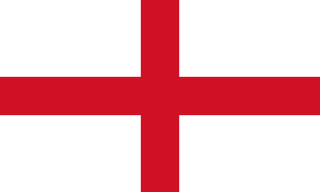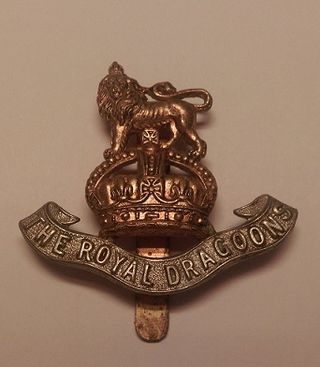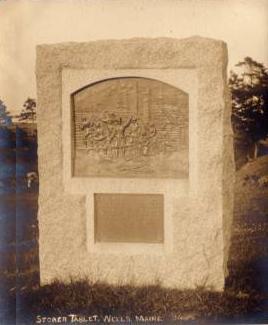
Tangier or Tangiers is a city in northwestern Morocco, on the coasts of the Mediterranean Sea and the Atlantic Ocean. The city is the capital of the Tanger-Tetouan-Al Hoceima region, as well as the Tangier-Assilah Prefecture of Morocco.

King Philip's War was an armed conflict in 1675–1676 between a group of indigenous peoples of the Northeastern Woodlands against the English New England Colonies and their indigenous allies. The war is named for Metacom, the Pokanoket chief and sachem of the Wampanoag who adopted the English name Philip because of the friendly relations between his father Massasoit and the Plymouth Colony. The war continued in the most northern reaches of New England until the signing of the Treaty of Casco Bay on April 12, 1678.

English Tangier was the period in Moroccan history in which the city of Tangier was occupied by England as part of its colonial empire from 1661 to 1684. Tangier had been under Portuguese control before Charles II of England acquired the city as part of the dowry when he married the Portuguese infanta Catherine. The marriage treaty was an extensive renewal of the Anglo-Portuguese Alliance. It was opposed by Spain, then at war with Portugal, but clandestinely supported by France.

The Royal Dragoons was a heavy cavalry regiment of the British Army. The regiment was formed in 1661 as the Tangier Horse. It served for three centuries and was in action during the First and the Second World Wars. It was amalgamated with the Royal Horse Guards to form The Blues and Royals in 1969.
Laurens Prins, anglicized as Lawrence Prince, was a 17th-century Dutch buccaneer, privateer and an officer under Captain Sir Henry Morgan. He and Major John Morris led one of the columns that raided Panama in 1671.
The Battle of Arklow was a minor skirmish that took place at Glascarrig on the coast road near Arklow in County Wicklow on 1 November 1649. It was fought between the army of the Parliamentarians and the combined forces of the Irish Royalists and Confederates during the Irish Confederate Wars.

Colonel William O'Brien, 7th Baron & 2nd Earl of Inchiquin, PC, was an Irish military officer, peer and colonial administrator who served as the governor of Tangier from 1675 to 1680 and the governor of Jamaica from 1690 until his death in office in 1692. O'Brien is best known for his long career in the service of the English Crown, serving as a colonial governor in England's overseas possessions in Africa and the West Indies.

The Battle of Bloody Brook was fought on September 28, 1675 between an indigenous war party primarily composed of Pocumtuc warriors and other local indigenous people from the central Connecticut River valley, and the English colonial militia of the New England Confederation and their Mohegan allies during King Philip's War.

The Raid on Wells occurred during King William's War when French and Wabanaki Confederacy forces from New France attacked the English settlement at Wells, Maine, a frontier town on the coast below Acadia. The principal attack (1692) was led by La Brognerie, who was killed. Commander of the garrison, Captain James Converse, successfully repelled the raid despite being greatly outnumbered.
Sir Palmes Fairborne was an English soldier and Governor of Tangier.

The Tangier Garrison was the land force which oversaw the defence of English Tangier between 1661 and 1684 when it was evacuated. It was part of the English Army, the de facto standing army that Charles II established following the Restoration. Charles II received Tangier as part of the Marriage Treaty with Portugal in 1661. He appointed Henry Mordaunt, 2nd Earl of Peterborough as governor and, on 30 January 1662, the new garrison took up its duties. Peterborough was not a successful appointment as governor, and Andrew, Lord Rutherford, was appointed in 1662/1663 to replace him.
Sir John Fitzgerald was an Irish soldier of the seventeenth century, best known for serving as Governor of Tangier during the 1660s. He commanded the Tangier Garrison during this time. He later participated in the Williamite War in Ireland (1689–91) on the Jacobite side.
Khadir Ghaïlan was a powerful warlord in Morocco during the seventeenth century. He controlled large swathes of the region until his death in September 1672 at the hands of Moulay Ismail. During the 1660s, He was noted for his clashes with the Anglo-Irish garrison at Tangier. Despite gaining a success over the garrison at the Battle of Tangier (1664) he was never able to seriously threaten the port. He agreed a number of truces with the Governors of Tangier.
The Sale of Dunkirk took place on 27 October [O.S. 17 October] 1662 when Charles II of England sold his sovereign rights to Dunkirk and Fort-Mardyck to his cousin Louis XIV of France.

The Battle of Tangier, also known as the Battle of Jew's Hill, took place between a detachment of the English Tangier Garrison under the command of governor of Tangier Lord Teviot by a Moroccan force commanded by Khadir Ghaïlan on 4 May 1664. Successfully ambushing the 500-strong English force, Ghaïlan's men killed all but thirty of them, including Teviot. The battle was the bloodiest defeat suffered by the Tangier Garrison during the English occupation of Tangier.

The English expedition to Portugal was a military expedition dispatched by England to Portugal in August 1662 to participate in the Portuguese Restoration War against Spain. It consisted of an English brigade largely drawn from veterans of the Eighty Years' War and the Wars of the Three Kingdoms, which fought in several major battles and skirmishes of the conflict under the command of Frederick Schomberg. The brigade remained in Portugal until the conflict's end in 1668, when it was disbanded. Under Schomberg's leadership, the brigade proved to be a decisive factor in the eventual Portuguese victory in the conflict.

Portuguese Tangier covers the period of Portuguese rule over Tangier, today a city in Morocco. The territory was ruled by the Kingdom of Portugal from 1471 to 1661.
The Great Siege of Tangier was an unsuccessful siege of English-occupied Tangier by the forces of the sultanate of Morocco in 1680.
The Battle of Tangier in 1662 was the first major engagement between the Moroccans, led by Khadir Ghaïlan, and the English garrison, led by Nathaniel Fines. The Moroccans routed the English force.

The 1924 retreat from Chefchaoun was the retreat of the Spanish forces from Chefchaouen during the Rif War. After the major defeat at Annual, the prime minister and the military dictator, Miguel Primo de Rivera, decided to withdraw his troops to the coast of Morocco. A major evacuation took place at Chefchaoun where a relief force escorted the garrison to Tetuan. During their march, the Spanish suffered constant attacks by the Riffian force, suffering heavy casualties. The retreat was a disaster for the Spanish army, suffering another devastating loss in the war.










